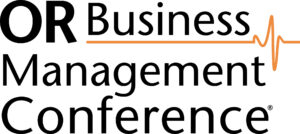Session: OR optimization driven by more than just data
Editor's Note
For Northwell Health University System, a large hospital system in New York state, saving millions in OR expenses in just a few years’ time was possible not just through meticulous analytics, but also cultural transformation.
This was among the chief conclusions of a session led by Adam Becker, MPA, assistant vice president of financial operations and perioperative services and Ryan Ott, MPA, senior manager of financial operations, perioperative services and interventional radiology, who reported working with a diverse group of multidisciplinary stakeholders to collect crucial insight for the initiative. “Everyone’s a small business owner,” summed up Becker (although he emphasizes that the patient remains top priority). “A lot of our ideas come from frontline staff.”
In addition to a culture of involvement, the success of the cost-savings initiative rested on three other pillars: product standardization, tray rationalization, and evaluation of preference cards. As an example of savings from product standardization, the presenters cite an example of usage data revealing that swapping 10-ml hemostat vials for 4-ml vials resulted in the same amount of vials being used over time. Making the switch permanent saved $120,000 per year.
Tray rationalization was essentially an exercise in streamlining instrument sets. For example, savings from combining sets between services results in fewer instruments overall, adding up to significant annual savings from instrument turnarounds. Savings in this category amounted to $266,365.
Surgical preference cards shed light on opportunities such as reducing waste from disposable OR items. Being more discerning about what items to open (and what to bring into the OR in the first place) contributed to savings in this category amounting to $20,754.
Such initiatives are particularly important amid continually increases in costs, particularly labor, and decreases in reimbursements, and when total healthcare spending is projected to reach $27 trillion by 2031, the presenters reported. Administrators can respond just as Becker, Ott, and the rest of the Northwell team did: bend the cost curve down by getting everyone involved in collecting and analyzing data, then challenging the status quo to take advantage of opportunities.
Read More >>

 Free Daily News
Free Daily News